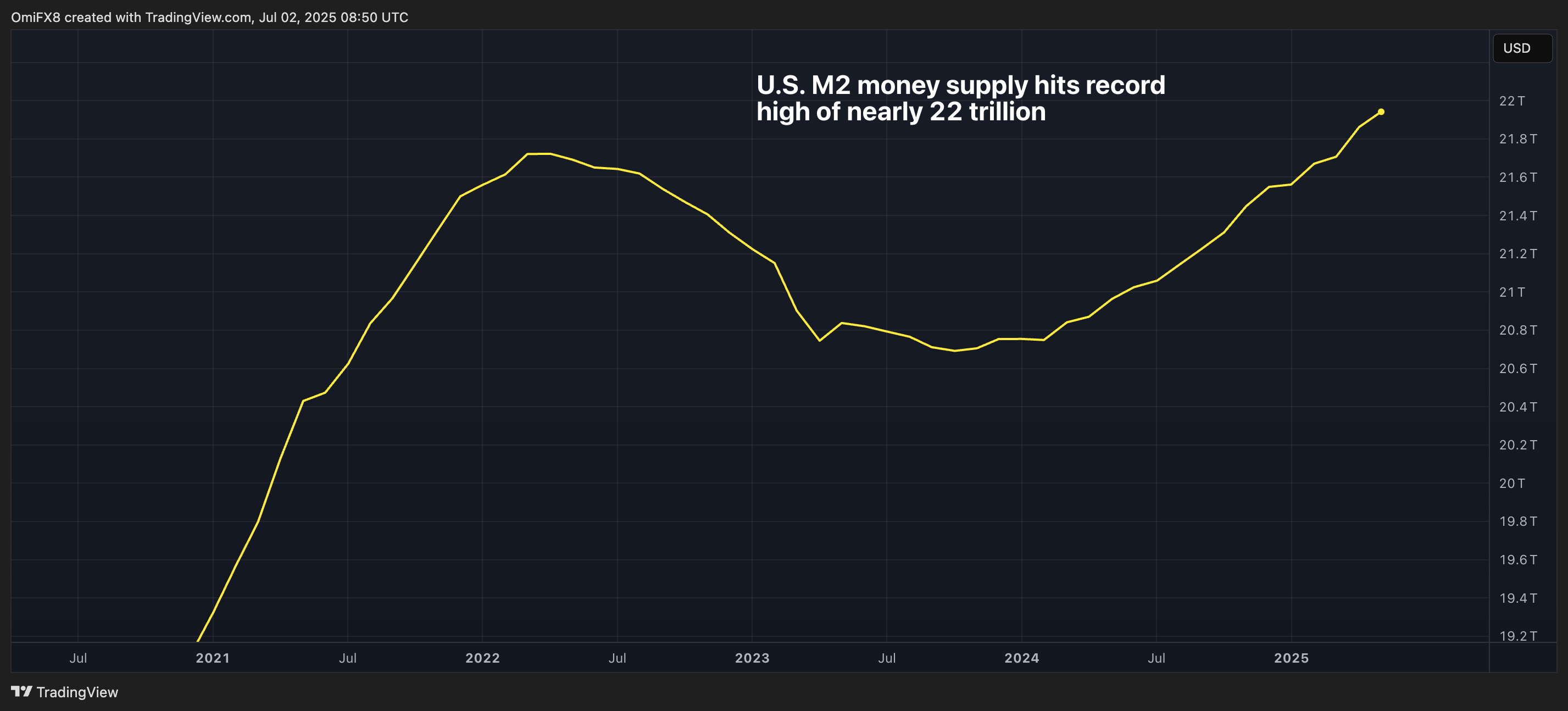
Overview
The M2 money supply in the U.S. has skyrocketed to an unprecedented $21.94 trillion as of May, breaking the previous record set in March 2022. This increase signals economic growth but raises questions regarding potential inflation impacts, as noted by experts at the St. Louis Federal Reserve.
- The year-on-year growth rate for M2 is now at 4.5%, marking the highest growth seen in almost three years.
- Experts indicate that an increase in the M2 supply may lead to inflation if it surpasses economic growth.
The M2 aggregate consists of cash, checking deposits, and easily convertible near-money. It is crucial for assessing the financial health of the economy. In recent times, an uptrend in M2 has been linked to inflation, with historical data showing that such increases often precede inflationary periods.
For cryptocurrencies, this situation presents a conflicted narrative. Generally, a higher money supply is interpreted as looser financial conditions likely to encourage investment in riskier assets, including cryptocurrencies. However, rising inflation could deter investment, prompting the Federal Reserve to consider raising interest rates.
The Fed’s preferred inflation measure, the Personal Consumption Expenditures (PCE) index, began rising approximately a year after M2 growth started accelerating, suggesting that the recent uptick in money supply could foreshadow inflationary challenges ahead.
